Interior Design
Pantone Issues 2018 Colour of the Year – Interior Designers React
Pantone names 'Ultra Violet' as the colour representing where society is at socially, economically and psychologically
The Pantone Color Institute has announced its 2018 Colour of the Year: Pantone 18-3838, ‘Ultra Violet’, which it describes as “a dramatically provocative and thoughtful purple shade”, one that is intrinsically linked to the power of creativity and spiritual practice. Houzz has talked to interior design professionals all around the world to gauge their reactions and seek their advice on how this strong, unambiguous colour can be worked into interiors.
Will it be popular?
Interior design professionals say that Ultra Violet can be divisive. “Violet is one of those colours that people either like or dislike – there’s no in-between,” says Jacquelene Symond, architectural colour consultant at The Colour Agency.
Sophie Mouton-Brisse, the France-based author of DécoBox: Colors and Well-Being agrees. “Violet is not an easy colour. Many people do not like it. It stands to reason that it will be more difficult to market than other colours,” she says.
Russian designer Taras Bezrukov, of TS Design says it is a colour only for the brave, “for people who have a different mindset”.
On the other hand, designers highlight its great potential in interiors and, like the Patone Color Institute, point to its meaningful associations.
“The purple colour family has a complex and fascinating history,” says Sonia Simpfendorfer, creative director of Australian design firm and colour consultancy Nexus Designs. “It has baggage. From royalty and the suffragettes to the psychedelic, it has a powerful, patchouli-scented history. Ironically, a shrinking violet is probably not the personality of the Ultra Violet adopter, but it is a surprisingly liveable colour.”
She say Australians are uniquely placed to integrate this colour into their homes. “In Australia, I love the gorgeous pre-Christmas imagery of jacaranda flowers against an intense blue sky, or a huge bunch of irises on a timber table – that familiarity is part of why purples and violets are actually easy to love.”
See how violet has been used in more interiors
Interior design professionals say that Ultra Violet can be divisive. “Violet is one of those colours that people either like or dislike – there’s no in-between,” says Jacquelene Symond, architectural colour consultant at The Colour Agency.
Sophie Mouton-Brisse, the France-based author of DécoBox: Colors and Well-Being agrees. “Violet is not an easy colour. Many people do not like it. It stands to reason that it will be more difficult to market than other colours,” she says.
Russian designer Taras Bezrukov, of TS Design says it is a colour only for the brave, “for people who have a different mindset”.
On the other hand, designers highlight its great potential in interiors and, like the Patone Color Institute, point to its meaningful associations.
“The purple colour family has a complex and fascinating history,” says Sonia Simpfendorfer, creative director of Australian design firm and colour consultancy Nexus Designs. “It has baggage. From royalty and the suffragettes to the psychedelic, it has a powerful, patchouli-scented history. Ironically, a shrinking violet is probably not the personality of the Ultra Violet adopter, but it is a surprisingly liveable colour.”
She say Australians are uniquely placed to integrate this colour into their homes. “In Australia, I love the gorgeous pre-Christmas imagery of jacaranda flowers against an intense blue sky, or a huge bunch of irises on a timber table – that familiarity is part of why purples and violets are actually easy to love.”
See how violet has been used in more interiors
Stefan Nilsson, a design and interior trend forecaster based in Stockholm, Sweden, says all signs pointed to Ultra Violet’s emergence as an influential colour. “In my travels to fairs in Paris, Milan and New York, I have seen all sorts of reds – from dusty pink to burgundy – in interior colour schemes for 2018, but this purple has more blue in it than I expected,” he says.
“Violet, to me, stands for elegance and exclusivity. It is also a serious colour tone, since it is traditionally associated with royalty and the Christian church.”
“Violet, to me, stands for elegance and exclusivity. It is also a serious colour tone, since it is traditionally associated with royalty and the Christian church.”
How to use it
A dominant colour that can overpower other elements in an interior, Ultra Violet demands decent company and well-thought-out co-ordination.
Stas Samkovich, designer and co-founder of Russian company TS Design says most commentators will push the fact that Ultra Violet goes well with shades of green. “Which is true. For me, though, it only works under one condition – the hues should be rich and solid. Using them both in lighter, washed-out shades would look depressing.
“Ultra Violet goes nicely with ‘dirty’ shades, which should appeal to those looking for a Brutalist interior. In this case, the colours of such an interior should be as solid as the violet, so that the overall look will be coherent.”
A dominant colour that can overpower other elements in an interior, Ultra Violet demands decent company and well-thought-out co-ordination.
Stas Samkovich, designer and co-founder of Russian company TS Design says most commentators will push the fact that Ultra Violet goes well with shades of green. “Which is true. For me, though, it only works under one condition – the hues should be rich and solid. Using them both in lighter, washed-out shades would look depressing.
“Ultra Violet goes nicely with ‘dirty’ shades, which should appeal to those looking for a Brutalist interior. In this case, the colours of such an interior should be as solid as the violet, so that the overall look will be coherent.”
German designer Markus Altvater, of The Inner House highlights violet’s versatility. “For a modern colour scheme, combine violet with neutral tones like white and grey. If you would like to make an extravagant statement, you can pair it with a dark olive-green. Pastel tones such as pale rose and light blue create a harmonious look in combination with violet,” he says.
Simpfendorfer suggests using Ultra Violet to punctuate an otherwise neutral scheme consisting of elements such as warm white walls, oak floors and natural linens. “You can help work intense violet into an otherwise neutral scheme by using supporting shades from the purple family, such as a muted purple sofa with vivid violet scatter cushions.”
Symond says overall, the best and most practical way to work with this forceful colour is to look to the colour wheel.
“Focus on the three colours that sit to either side of violet – these are called analogous colours, and will give you a beautiful, harmonious palette. In this instance, you’ll most likely be looking at red-purple, blue and blue-purple. Alternatively, look for the complementary colour to violet – the colour that sits directly opposite it on the colour wheel, which in this case is yellow.
Opposites Attract: Complementary Colour Combos
“Focus on the three colours that sit to either side of violet – these are called analogous colours, and will give you a beautiful, harmonious palette. In this instance, you’ll most likely be looking at red-purple, blue and blue-purple. Alternatively, look for the complementary colour to violet – the colour that sits directly opposite it on the colour wheel, which in this case is yellow.
Opposites Attract: Complementary Colour Combos
“Rich metallics such as gold, silver and bronze also sit beautifully with violet.”
The importance of lighting
It’s important to note that Ultra Violet looks different depending on whether it is exposed to natural or artificial lighting.
Russian interior designer Daria Kharitonova says, “At its core, Ultra Violet is a mix of blue and red. One of the two then becomes dominant, depending on the lighting. [The yellow of ] warmer lighting brings the red to the forefront, making the colour closer to a magenta shade. Colder illumination brings out blue shades. These things should be taken into account when planning interior lighting.”
It’s important to note that Ultra Violet looks different depending on whether it is exposed to natural or artificial lighting.
Russian interior designer Daria Kharitonova says, “At its core, Ultra Violet is a mix of blue and red. One of the two then becomes dominant, depending on the lighting. [The yellow of ] warmer lighting brings the red to the forefront, making the colour closer to a magenta shade. Colder illumination brings out blue shades. These things should be taken into account when planning interior lighting.”
The rug fringe in this photo is a great way to add a micro dose of Ultra Violet to an interior.
Where would Ultra Violet work best in the home?
Interior designers usually recommend bold colours are used where people don’t spend as much of their time, including hallways, entryways and guest bathrooms.
However, Italian architect Valentina Solera says the living room is an ideal location for Ultra Violet. “It’s great for the wall behind the TV, with the rest of the walls painted white and a grey sofa. The result would be a really lively and dynamic room.”
Simpfendorfer thinks it would work in any room, with a few important exceptions. “I’d use it in light-filled living spaces in preference to bedrooms or kitchens or bathrooms. Inky blues and denim shades can be very calming and luxurious in a bedroom, but Ultra Violet and purple have an intensity that might work against sleep – they’re too dramatic.
“Bathrooms need to have a very flattering light, and if you were to use a lot of violet or purple, it could create a blue-tinged light that might make you look a little queasy. Kitchens can take really deep, dark colours on joinery, but once again it’s about the overall effect of the colour on the light. Food needs quite natural light and reads best against a more neutral background.”
Where would Ultra Violet work best in the home?
Interior designers usually recommend bold colours are used where people don’t spend as much of their time, including hallways, entryways and guest bathrooms.
However, Italian architect Valentina Solera says the living room is an ideal location for Ultra Violet. “It’s great for the wall behind the TV, with the rest of the walls painted white and a grey sofa. The result would be a really lively and dynamic room.”
Simpfendorfer thinks it would work in any room, with a few important exceptions. “I’d use it in light-filled living spaces in preference to bedrooms or kitchens or bathrooms. Inky blues and denim shades can be very calming and luxurious in a bedroom, but Ultra Violet and purple have an intensity that might work against sleep – they’re too dramatic.
“Bathrooms need to have a very flattering light, and if you were to use a lot of violet or purple, it could create a blue-tinged light that might make you look a little queasy. Kitchens can take really deep, dark colours on joinery, but once again it’s about the overall effect of the colour on the light. Food needs quite natural light and reads best against a more neutral background.”
Photo by Jonny Valiant
Altvater suggests a softly, softly approach for newcomers to this colour. “If you are unsure whether you really love violet, you can give it a try with pillow cases first. If you want to go all-out, keep violet’s spiritual connotations, and its effect when combined with other colours, in mind. If you happen to have a meditation room or spa in your home, for example, a dark violet used throughout would achieve a very dramatic look.”
An Interior Designer Reveals: 3 Things I Wish My Clients Knew
Altvater suggests a softly, softly approach for newcomers to this colour. “If you are unsure whether you really love violet, you can give it a try with pillow cases first. If you want to go all-out, keep violet’s spiritual connotations, and its effect when combined with other colours, in mind. If you happen to have a meditation room or spa in your home, for example, a dark violet used throughout would achieve a very dramatic look.”
An Interior Designer Reveals: 3 Things I Wish My Clients Knew
Tip: You can test out Ultra Violet using LED lights to emulate the paint.
Symond says to tread carefully. “Violet is a strong colour, so unless you’re completely obsessed with it, it’s best used in small doses as an accent colour, so that it doesn’t overwhelm a space.”
US designer Jennifer Ott has the last word. “It’s important to point out that these colours are not a call to redecorate one’s home in the latest trendy hues,” she says.
“Few of us have the budget or wherewithal to redo our decor every year. But my advice to those who are drawn to a particular colour is that it will become easier to find furnishings and decorative accessories in the chosen hue. So that means 2018 will be a good year to stock up on all things purple, if you love the colour.”
Tell us
Do you like Ultra Violet? And if so, how will you work it into your home? Tell us in the Comments below and join the colour trend conversation.
More
See more advice from interior designers here
“Few of us have the budget or wherewithal to redo our decor every year. But my advice to those who are drawn to a particular colour is that it will become easier to find furnishings and decorative accessories in the chosen hue. So that means 2018 will be a good year to stock up on all things purple, if you love the colour.”
Tell us
Do you like Ultra Violet? And if so, how will you work it into your home? Tell us in the Comments below and join the colour trend conversation.
More
See more advice from interior designers here





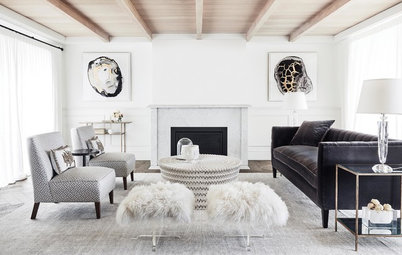
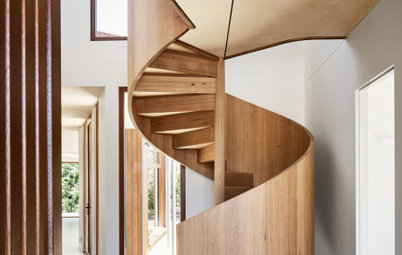

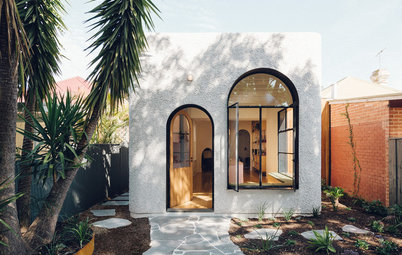
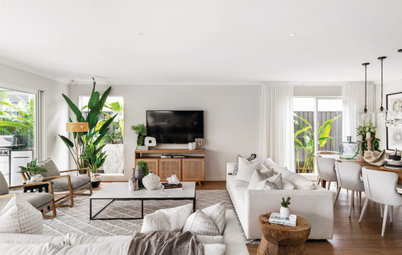
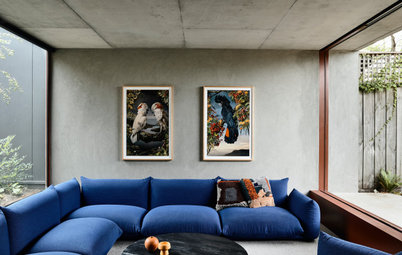
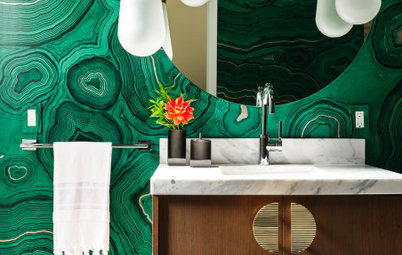
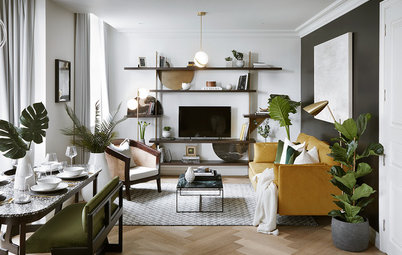
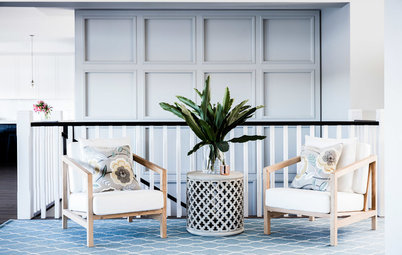
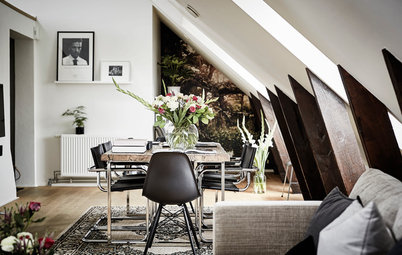
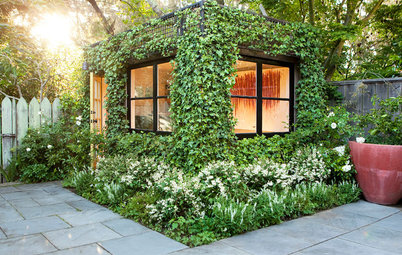
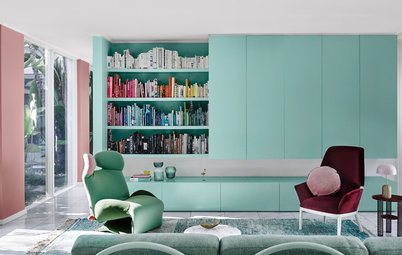
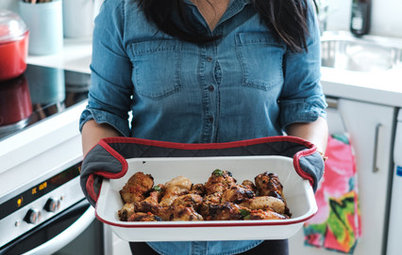
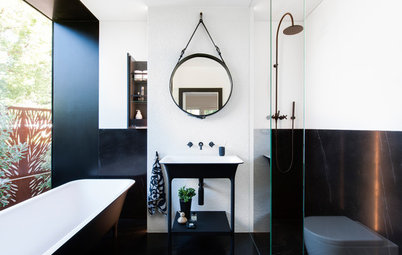
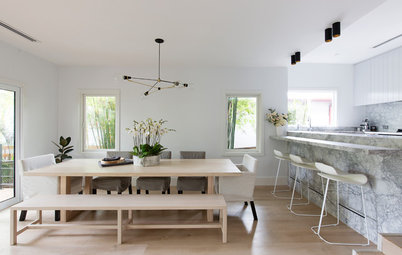
Accordingly, the Institute’s pick for Colour of the Year is ‘Ultra Violet’; a powerful shade that is evocative of the mysteries of the cosmos and discoveries that push the boundaries of knowledge. Enigmatic purples are considered symbolic of the vast and limitless night sky, artistic brilliance and countercultures.
As Pantone points out, purple is also linked to David Bowie and Jimi Hendrix, who famously turned to shades of violet to express their individuality. Pantone also notes that Ultra Violet is associated with mindfulness practices, and has a mystical and spiritual quality that offers a refuge from today’s over-stimulated world.
So where did it come from, and will it be the next ‘it’ colour? And, most importantly, where and how can you use it in your home?